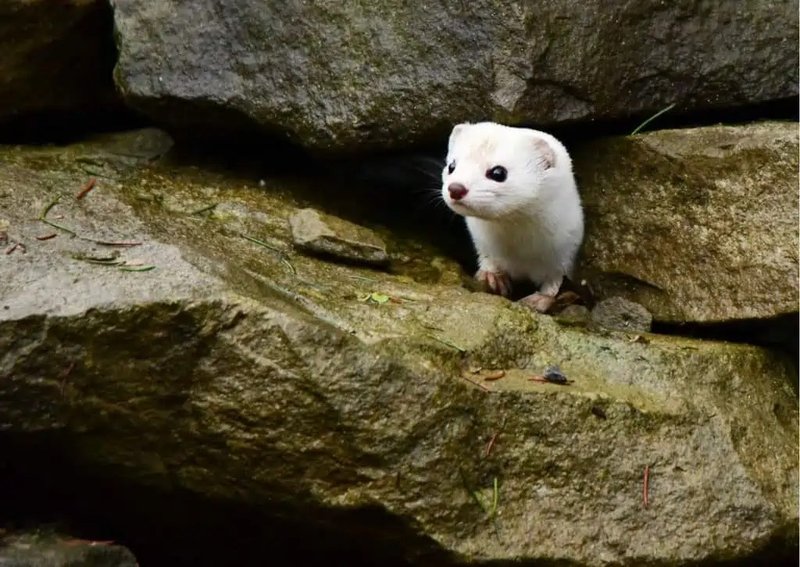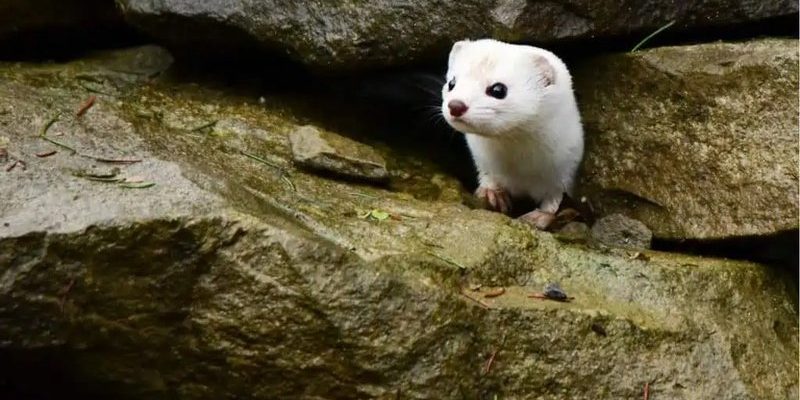
Weasels belong to the Mustelidae family, which includes otters, ferrets, and badgers. Their cunning nature has allowed them to adapt and thrive in various environments. So, just how smart is a weasel? Let’s dive into their cognitive abilities and behaviors, uncovering the fascinating intricacies of this often-overlooked animal.
Understanding Weasel Intelligence
You might be wondering what we mean by “intelligence” when it comes to animals like weasels. In the simplest terms, intelligence can refer to an animal’s ability to learn, problem-solve, and adapt to their surroundings. For weasels, this involves a mix of instinctive behaviors and learned skills.
Research shows that weasels are quite adaptable creatures. They can learn from past experiences, which helps them navigate their environments. For instance, if a weasel encounters a predator in a specific area, they’re likely to remember that danger and avoid it in the future. This ability to learn from their surroundings is a key indicator of their intelligence.
Moreover, weasels exhibit various problem-solving skills. Whether it’s finding food or escaping from predators, they display a certain level of cunning. They can squeeze through tight spaces and use their agile bodies to their advantage. Imagine trying to outsmart a locked door; weasels are like the little Houdinis of the animal world.
Social Behavior and Communication
While weasels are often solitary animals, their social behavior adds another layer to their intelligence. They engage in intricate communication with each other, using vocalizations, body language, and even scent marking.
When weasels communicate, they can convey a range of messages. For example, they use different sounds to signal alarm or attract mates. The ability to express themselves shows they possess a level of social intelligence, which might surprise you given their size!
Let’s break it down a bit. Here are some ways weasels communicate:
- Vocalizations: Weasels produce unique sounds like chirps, growls, and hisses to communicate with others.
- Body Language: Their posture and movements can signal aggression or submission to other weasels.
- Scent Marking: They use their scent to establish territory and communicate presence to others in the area.
This mix of communication methods indicates that weasels are not just mindless creatures; they have the capacity to interact meaningfully with their peers.
Hunting Skills and Strategies
When it comes to hunting, weasels exhibit remarkable skill and strategic thinking. Their hunting methods are varied and often quite clever. For instance, they tend to employ stealth and patience, waiting for the perfect moment to strike.
One common tactic is their ability to enter burrows or hideouts of other animals, like rabbits. Once inside, they can quickly catch their prey off guard. It’s almost like playing a game of chess with their food—a game where they often come out on top.
Additionally, weasels display persistence. If they fail to catch something the first time, they don’t just give up. Instead, they may adjust their approach or wait for a better opportunity. This level of problem-solving during a hunt highlights their cognitive prowess.
Adaptability in Different Environments
Another fascinating aspect of weasel intelligence is their adaptability to different environments. Weasels can be found in various habitats, from forests and grasslands to urban areas. Their ability to thrive in such diverse settings speaks volumes about their cognitive skills.
Weasels have masterful survival instincts. They know when to hide, when to hunt, and how to navigate obstacles in their path. For example, in an urban setting, they might learn to scavenge food from trash cans or navigate through gardens. This adaptability indicates not just intelligence but also a willingness to learn and change based on their surroundings.
In essence, weasels are quick learners. They adjust their behaviors based on the availability of resources, seasonal changes, and the presence of predators. You could say they are the “survivors” of the animal kingdom, showcasing intelligence that allows them to outsmart not just their prey but also their environment.
Weasels and Tool Use
You might think that tool use is reserved for animals like chimpanzees or crows, but surprisingly, weasels show their own cleverness in this regard. While they may not use tools in the same way as larger animals, they do display a level of ingenuity in how they interact with their surroundings.
For example, weasels have been observed using natural objects as tools. They might use a stick to help pry open a burrow or utilize the environment around them to create hiding places. This clever usage of their surroundings demonstrates a level of intelligence we often overlook.
Moreover, their ability to gather materials for nesting and burrowing shows a forward-thinking mindset. They can assess what is available and make choices based on their needs, which is a hallmark of cognitive ability.
So, just how smart is a weasel? As we’ve explored, these little creatures possess a remarkable array of cognitive abilities and behaviors. From their problem-solving skills and adaptability to their social communication methods, weasels exhibit intelligence that may surprise even the most seasoned animal enthusiasts.
You might not expect much from such a small animal, but they are much more than meets the eye. Understanding their intelligence not only fosters appreciation for these clever creatures but also enriches our knowledge of the animal kingdom as a whole. Next time you spot a weasel darting across your path, you’ll have a newfound respect for its cunning nature and clever mind.

